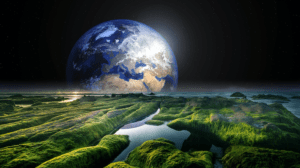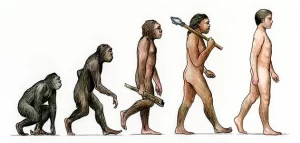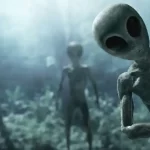The vastness of the infinite universe is beyond our imagination.
This photo shows a brief description of the giants of the vast universe.
Sirius
If the tiny dot in the lower left corner is the size of our Sun, a medium-sized star, the next tiny white dot is Sirius, the brightest star we can see with the naked eye, and its diameter is twice that.
Pollux
The next orange dot is Pollux, an orange giant star, the brightest star in the constellation Gemini. It is nine times the diameter of the Sun. This is also the closest star to us belonging to the giant star category. The nearest distance is 34 lightyears.
Arcturus
The next orange star is Arcturus, a red giant star 36.7 light-years away in the constellation Bootes. It is 25 times larger in diameter than our Sun and emits 100 times more light than the Sun. And it is a star 200 times more powerful than the Sun.
Rigel
The next blue star is Rigel, a blue supergiant star visible to the naked eye, which represents the left leg of the constellation known as Orion or the hunter. Located 860 light-years away from us, the star is a supergiant star with a diameter 70 times that of our Sun.
Betelgeuse
The next red star is Betelgeuse, a Red supergiant star that can be seen in red with the naked eye, which represents the right shoulder of the hunter in the constellation of Orion or the hunter.
Located about 600 light years away from us, this star is 1000 times the diameter of the Sun.
To take as an example how big it is, if placed where our sun is in our solar system, it would engulf not only Mercury, Venus, and Earth, but also the planet Mars and spread to the receiver ring beyond.
UY Scuti
The orange star at the end is UY Scuti, a red hypergiant star in the constellation Scutum, once known as the largest star ever discovered.
Located in the center of the galaxy at a distance of about 9500 light-years, this star is 1700 times the diameter of our sun.
That is, if we put it in the middle of the solar system, it would swallow the planet Jupiter and spread towards Saturn. And its volume could contain five billion stars like our Sun.
Also, Stephenson 2-18 is considered to be a red supergiant star with a diameter of 2150 times that of our Sun, and its volume can contain 10 billion stars like our Sun, and if it is placed in the Solar System, the orbit of the planet Saturn. extends to Given the huge stars described above, our sun in this universe can be considered as a very small particle, and I think you will be able to imagine the place of the earth and the people who live there in the universe.
Did Life Come To Earth From Aliens?
source: Facebook post







